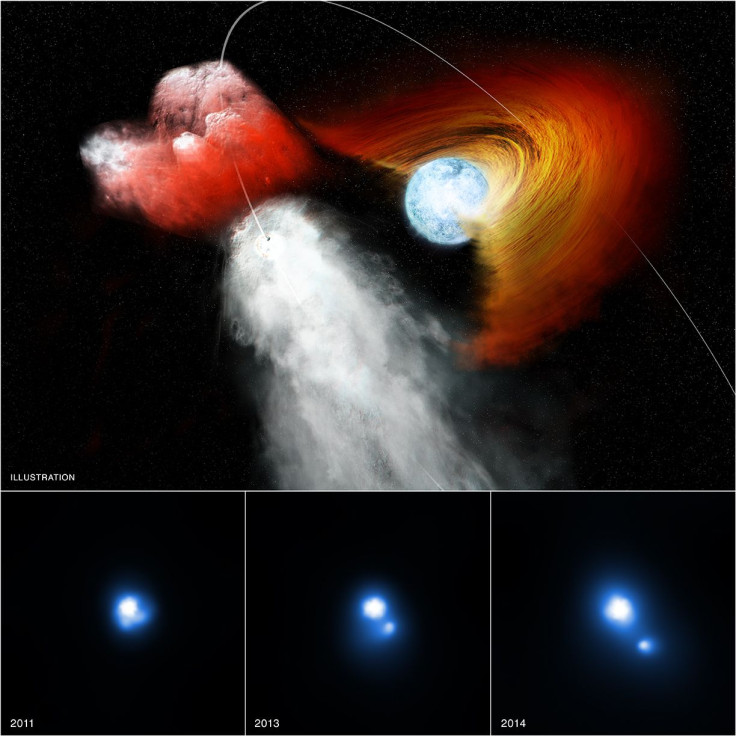Fast-Moving Pulsar Rips A Hole Through Stellar Disk Of Companion Star

Scientists have observed a pulsar punch a hole through the disk of gas surrounding its companion star. The discovery was made using NASA’s Chandra X-ray Observatory, which detected X-ray emissions believed to have been produced when the pulsar’s wind rammed into the material of the disk.
“These two objects are in an unusual cosmic arrangement and have given us a chance to witness something special,” George Pavlov from the Penn State University in State College, Pennsylvania, and the lead author of a paper describing these results, said, in a statement. “As the pulsar moved through the disk, it appears that it punched a clump of material out and flung it away into space.”
Pulsars are rotating neutron stars, which are immensely dense stars created as a result of a massive star collapsing in on itself. As a pulsar rotates, it emits high-energy radiation, similar to a lighthouse casting beams of light. If this beam of high-energy radiation is pointed toward the Earth, the pulses can be detected using telescopes.
This particular pulsar is part of a double star system named PSR B1259-63/LS 2883 -- or B1259 for short -- located 7,500 light-years from Earth. Three separate observations made between December 2011 and February 2014 show that the clump of stellar material surrounding the star system is being blown away at incredibly high speeds as the pulsar makes its closest approach to the star every 41 months.
The strong wind of high-energy particles moving away from the pulsar at close to the speed of light is believed to have been produced by a combination of rapid rotation and an intense magnetic field. Measurements suggest that the wind is blowing the disk material -- which spans an area hundred times the size of our solar system -- away from B1259 at an average speed of about 7 percent the speed of light.
“This just shows how powerful the wind blasting off a pulsar can be,” co-author Jeremy Hare from the George Washington University in Washington, DC, said, in the statement. “The pulsar’s wind is so strong that it could ultimately eviscerate the entire disk around its companion star over time.”
© Copyright IBTimes 2024. All rights reserved.






















